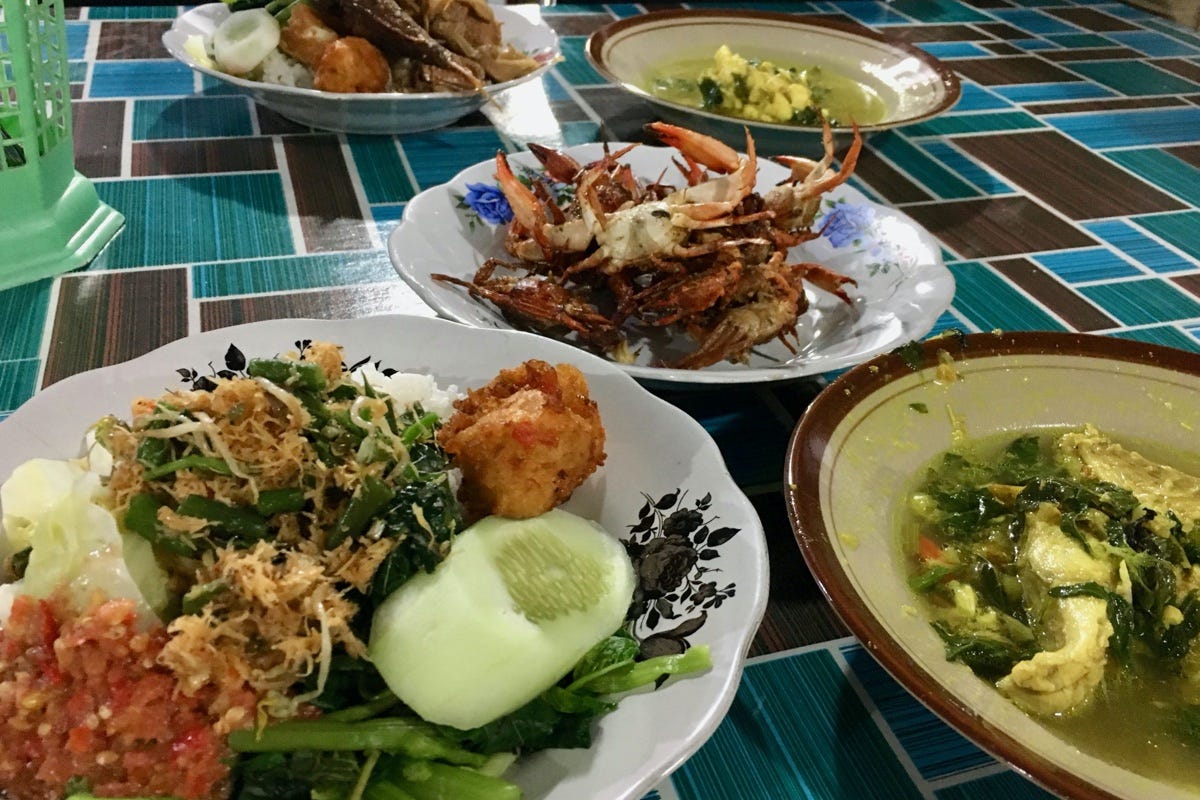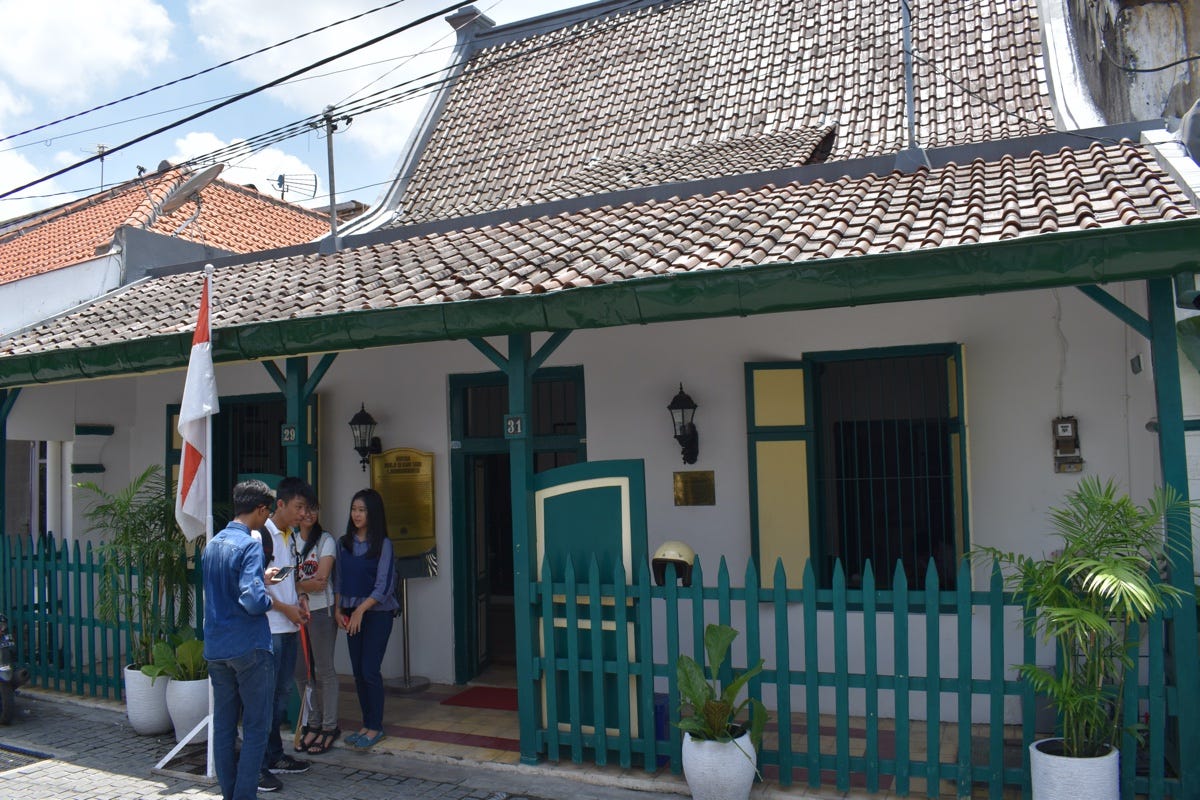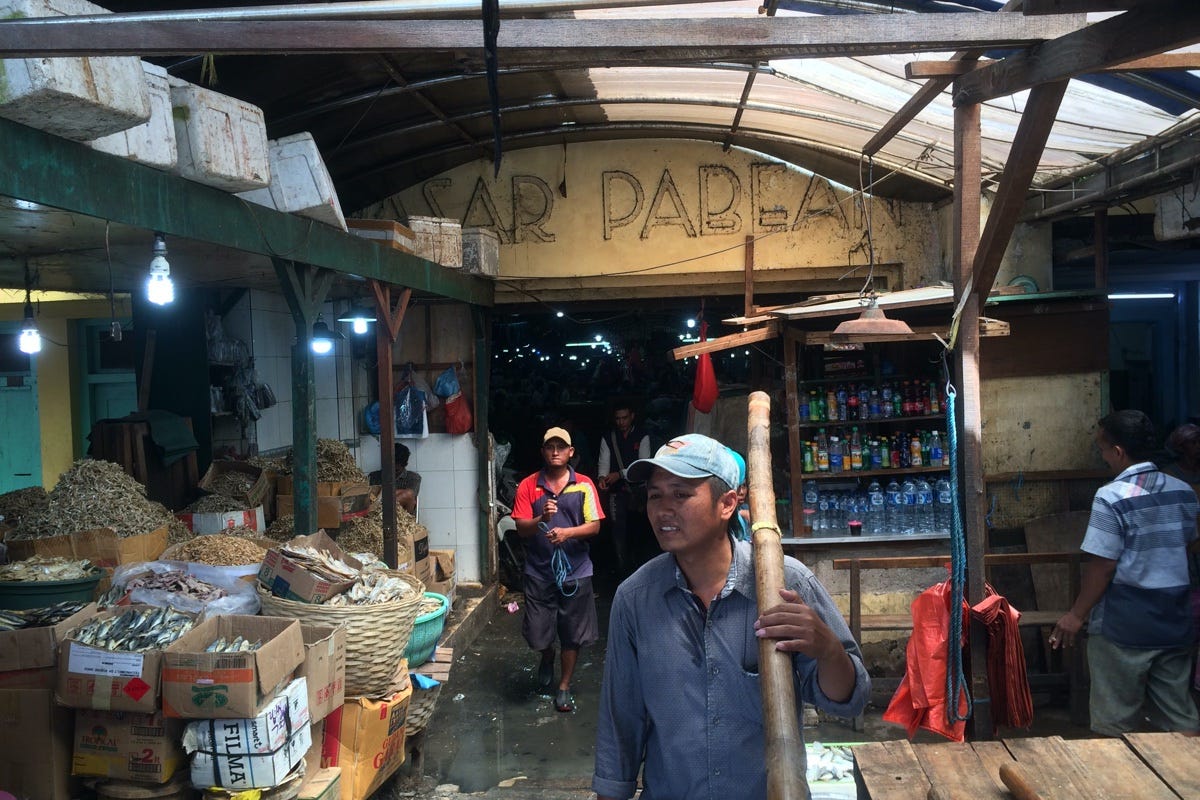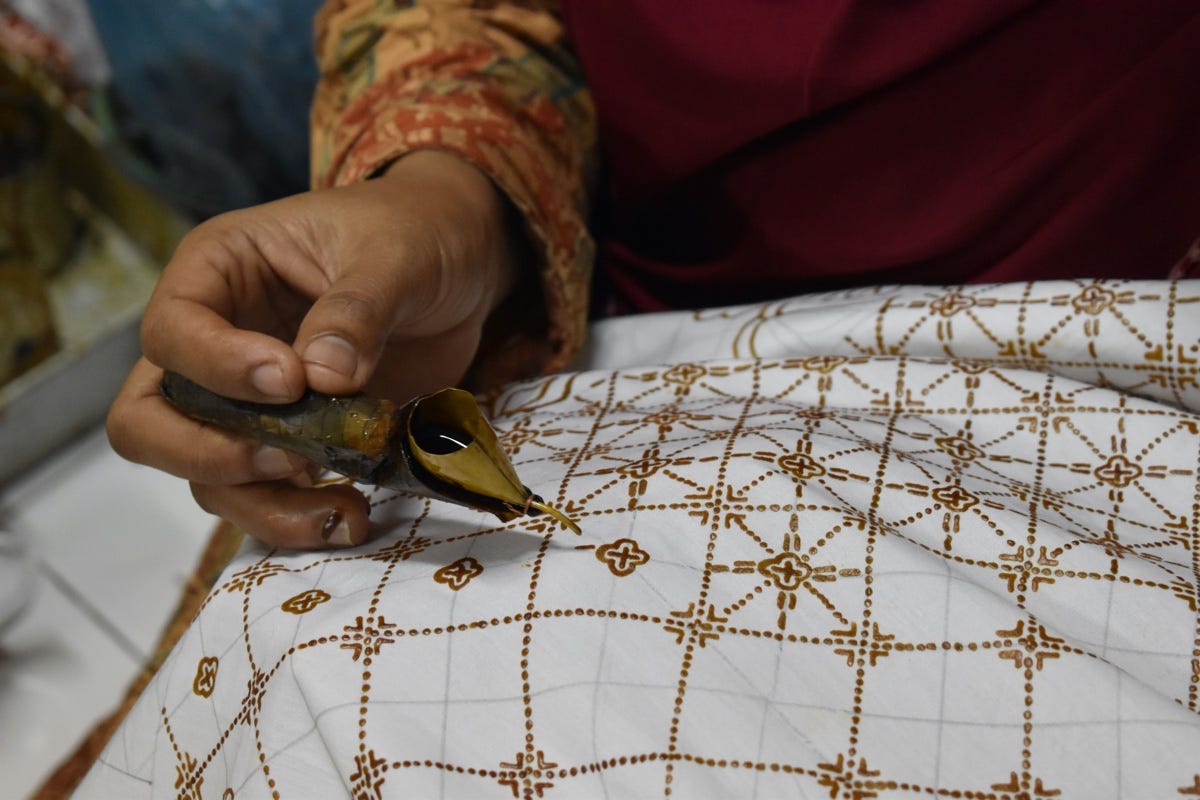I’ve always been always baffled by the few international tourists Indonesia’s Java attracts. Of course there are few (if any), at the moment, thanks to Covid19, but even pre–plague there were few. While it is popular with Indonesians, foreigners are few and far between. Why?
There are exceptions of course. The capital sees a trickle of foreigners—more often than not, transiting elsewhere. Yogyakarta, thanks to its cultural reputation, and proximity to Borobudur, ticks over. It is also on the way to Bali, which helps. I’d struggle to name another foreign tourist favourite on the island. Bandung? Surabaya? Distant thirds and fourths.
Meet Bakso Eddy in Probolinggo. Photo: Sally Arnold.
There are the niche groups of course. The surfers on the southwest coast, language students in Yogya, the volcano climbers. None of these move the needle though—at least outside the local communities they’re already in.
Earth’s most populous island, Java is home to over 150m people—over half Indonesia’s population. It has a rich history, diverse culture and natural attractions of staggering beauty. It is affordable, the food is good, and, by and large, the people welcoming. So what gives?
Sego Tempong M'bok Wah, Banyuwangi. Photo: Sally Arnold.
Is it the transport? Yes, long distance bus travel in Java (and Indonesia for that matter) can be lacklustre. The train is an excellent—and affordable—alternative. The rail network takes in many of the great destinations on the island. There’s also loads of domestic flights.
Is it the trash? A beach walk spent dodging soiled nappies isn’t ideal, nor is camping by garbage—regardless of the view. On this count, Indonesia is improving, albeit at a slow pace. Baby steps.
Grab a banana before Bromo. Photo: Sally Arnold.
Or is it a fear of “creeping conservatism.” That Islamic bugbear that the international press gives routine re–runs to? There’s a bit of that I guess—some regions are more conservative than others—a bit like the US, oh wait, they’re Christian. I digress.
Does difficulty in getting a cold beer put that many people off? To my mind it seems a small price to pay.
A small price for what? A lot.
Grazing at Warung Lamongan Cak Rie, Malang. Photo: Sally Arnold.
One of the joys of Java is getting lost, then found, then lost again. There are no shortage of enormous cities, but they’re but a collection of villages. Perfect for getting lost in.
In Surabaya, one of Java’s largest cities, I wanted to walk to the African Quarter. It was about a four hour walk from my hotel, and midway along the way, semi–lost, I buttonholed some students.
They set me right, then suggested a diversion—the House of Hadji Oemar Said Tjokroaminoto. Tenants of the once boarding house included thinkers like Sukarno, Musso and Kartosoewiryo. These men all played roles in the country’s path to independence. As with Dokter Mohamad Saleh’s house in Probolinggo, the museum is as excellent as it is under–promoted. In my experience, the stuff you stumble upon, is often the best. For me at least, the vector to these places, is frequently local people.
The stories these walls could tell. At the House of Hadji Oemar Said Tjokroaminoto. Photo: Stuart McDonald.
Walking again, this time in Malang—my favourite city in Java. It was a food–meet–architecture walk led by a couple of Malang evangelists. We ate and we walked and we talked. We met local people and stepped through the threshold into their homes. It was far from a polished affair, but the guides’ enthusiasm for their town was infectious. The few foreigners who hit Malang often see it only as a launching point for Bromo, or for the Tugu—but nothing more.
There is, of course, far more. I’ve often said, at a glance Indonesia does not do cities well. Having a local hand to show you around though, as I’ve written before about Medan in North Sumatra, helps. Before you know it, you’ve not only lifted a corner of the carpet, you’ve rolled it up and found something else entirely.
Wandering Surabaya’s African quarter. Photo: Stuart McDonald.
Matt Gross writes for the New York Times on how a series of circumstances delivers him to Nglurah. A village on the slopes of Gunung Lawu in Central Java, a ceremony is underway.
“Something changed for me there, as I watched this mishmash of traditions—Muslim, Hindu, Javanese, Nglurahnese—with a mishmash of nationalities. For too long, I realized, I’d been needlessly orthodox in my own thinking, intent on cramming Indonesia into the strictures of my narrow brand of lost-ism. But this was a land where orthodoxy has historically been bested by the easy joys of syncretism. I’d have to abandon, or relax, the rules I traveled by and instead follow Indonesia’s unofficial motto: Tidak apa-apa ko—never mind.”
When I first moved to Indonesia, Jakarta—a city I’ve never came to grips with—was home. On an early trip out of the megapolis, I took a train to Yogyakarta. After the oppressive greys of the capital, the trip was a revelation.
Meeting the locals on the Dieng Plateau. Photo: Sally Arnold.
The train passed by cities, towns, villages and nature. It was rare to have a prolonged stretch of forest or fields, but the scene was ever changing. So many people, so many scooters. Then, on one stretch, a valley sprawled out from the tracks, and the beauty took my breath away. I’m no newbie to rice field valleys, but this was magnificent. Java gets many accolades for its peaks, but the bountiful countryside is their equal. It was also easier to enjoy!
Here is V.S. Naipaul, on Java’s countryside—and its people—in Among The Believers: An Islamic Journey.
“The houses—as we saw later, driving inland from Surabaya—matched the rice strips. They were very narrow and went back a long way. The houses stood a little distance from the road, and the front gardens were scraped clean, but shady. Banana trees grew out of the bare earth, and coconut trees, mango trees, sugar cane and frangipani. The rice fields began directly at the back of the houses. During that drive we seemed to be going through one long village: Java here an unending smallness, hard to associate with famous old kingdoms and empires, a land that seemed only to be a land of people of petty diligence, the wong chilik, the little people, cursed by their own fertility, four million in Java at the beginning of the last century, eighty million today.”
Java’s population has almost doubled since he wrote this in 1981, yet the hospitality remains. Big time.
Quality batik requires a fine hand. Photo: Stuart McDonald.
Before I visited Solo, a city an hour north of Yogyakarta, another writer described it to me as “Yogya with a veil”. He meant this as an insult, but once there, I saw while he said was factually correct, his opining was well off the mark.
Wandering the lanes of a fabric district in the early morning, places were opening up. A couple invited me into their humble abode for tea and cigarettes. Mum served tea in stubby glasses, Dad smoked. All of us on faded blue plastic chairs, a linoleum covered wooden table between us on a bare concrete floor. Their kids sat on the concrete and stared at me—then smiled shyly when I met their gaze. When I went to leave, Dad grasped my hand with both his, “Welcome to Solo,” he said, “the home of our president.”
This hospitality is not unique to Java of course, I’ve encountered it across the country. In particular in Sumbawa—another island supposedly under the thrall of “religious conservatism”.
At Resto Pecel Solo. Photo: Sally Arnold.
I’ve often thought of Indonesia as a weird response to colonialism. Each island is so different from the next—Sumatra to Java to Bali to Lombok and so on. Then within each island, changes and variations again. Faith, language, food and culture. Why are they all a part of the one country?
One thread ties all the islands together though: hospitality. The hand on your heart real deal, and there’s no better place to experience it than Java.
So to circle back to my original question. Why do so few foreign tourists visit? Yes, it is harder travel. Not brutal, but more challenging and uncomfortable than say Thailand or Malaysia. Indonesia’s tourist visa policies do it no favours, though I’m not going to flog that dead horse again.
Get out there and explore! Batu Karus, West Java. Photo: Sally Arnold.
More than anything though, look to Tourism Indonesia’s promotion of the country. Java has far more to offer than Yogyakarta, Borobudur and Jakarta. They need to double down on the real strength of the island—the people.
There’s no shortage of itineraries they could promote. Imagine an archeological route, tying together the empires of days long gone. Surfing the south coast. A food itinerary—my god, I don’t know where to start, but I do know we’d all be kilos heavier by the end of it!
As I’ve said, over and over, anywhere is worth a night. Java has no shortage of places one could or should stay another night in—or three.
Every face has a story. At Pa Djaja, Pangandaran. Photo: Sally Arnold.
Tourism Indonesia needs to wean itself off the low hanging fruit of volcanos and ruins. Once you’ve ticked off a monument or peak, there’s no need to return. Hello Burma, I’m talking to you too!
Tell peoples’ stories. Introduce the unending smallness of Java to the world, and give people a reason to return over and over.





















